Material world: Peter Marino reflects on bronze, mythology and timeless design
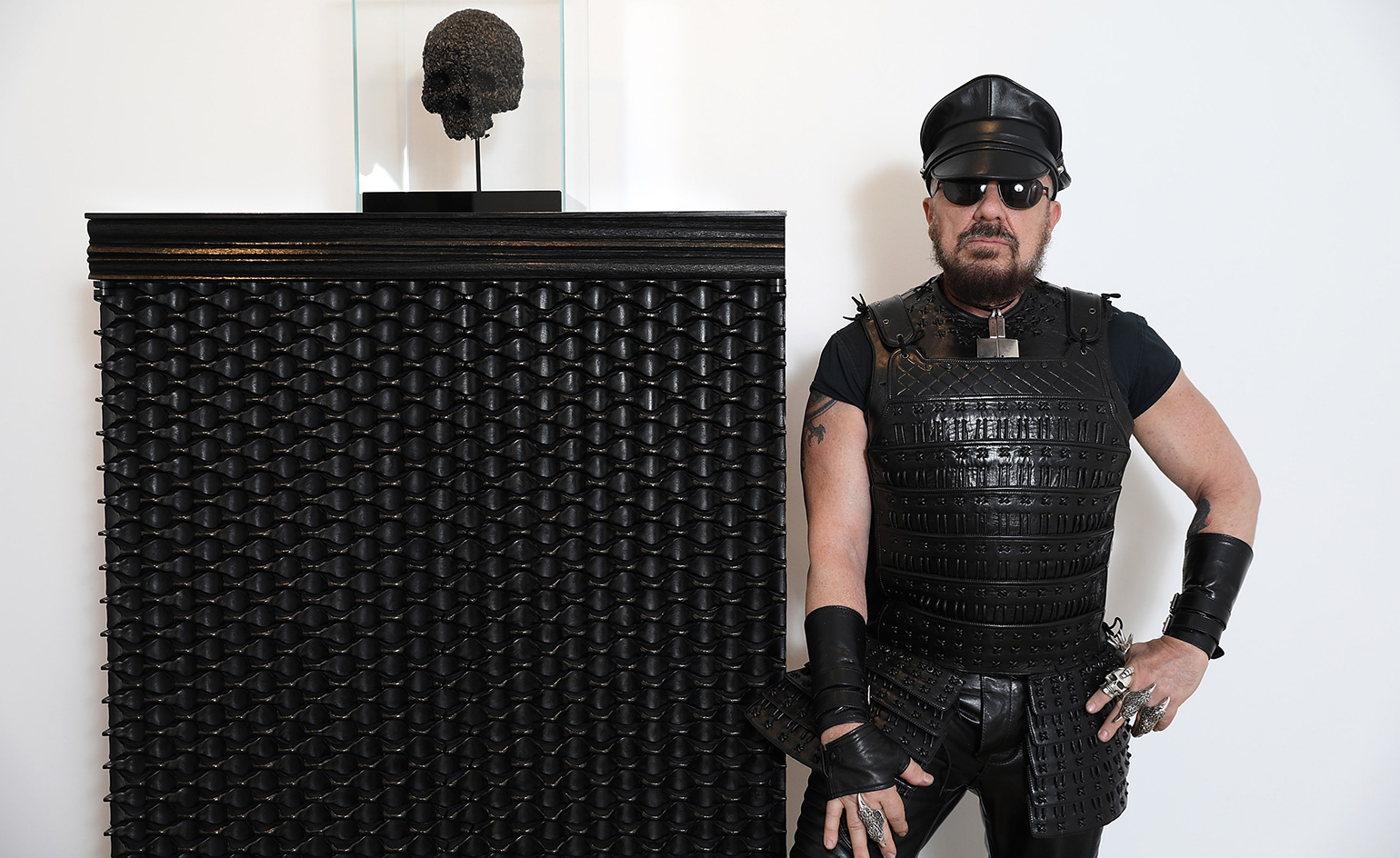
Peter Marino is continually driven to make new and long-lasting marks on the creative world. Starchitect, artist, fashion house favourite, leather-clad luminary and landscape gardener; a few of the many titles Marino has collected over an ongoing 45 year career. His art collection is just as multifaceted, including Andy Warhol paintings, historic bronze sculptures, and one of the world's largest collections of Robert Mapplethorpe photographs.
Another title to add to the list: trend-avoider. 'Trends are for people who want to get noticed. Three months later everyone is yawning,' says Marino, clad hat-to-shoe in the iconoclastic biker-gear he's known for, complete with fingerless gloves bound in the same French calf leather used for his recent pen collaboration with Caran d'Ache. Silver bird-skull rings clink on each finger. 'Maybe it’s old fashioned, but I think the end goal in design should be timelessness. IM Pei achieved it with the East Wing of the National Gallery of Washington. It has no time, no place, no nothing. That’s why it was great when it opened, it's great now, and will always be great.'
His quest for design longevity explains his predilection for bronze – a material that can last 5,000 years. He has worked with it since 2012 on three collections of functional boxes, the latest of which is currently on display at Gagosian gallery's Davies Street location. 'There was a show about the age of bronze here in London about three years ago,' Marino recalls. 'The centrepiece was a Greek statue of a dancer that they found under the ocean from 400 BC. It was essentially 2,414 years old. I was so impressed. What art really lasts the ages? Does anything we do last that long?'
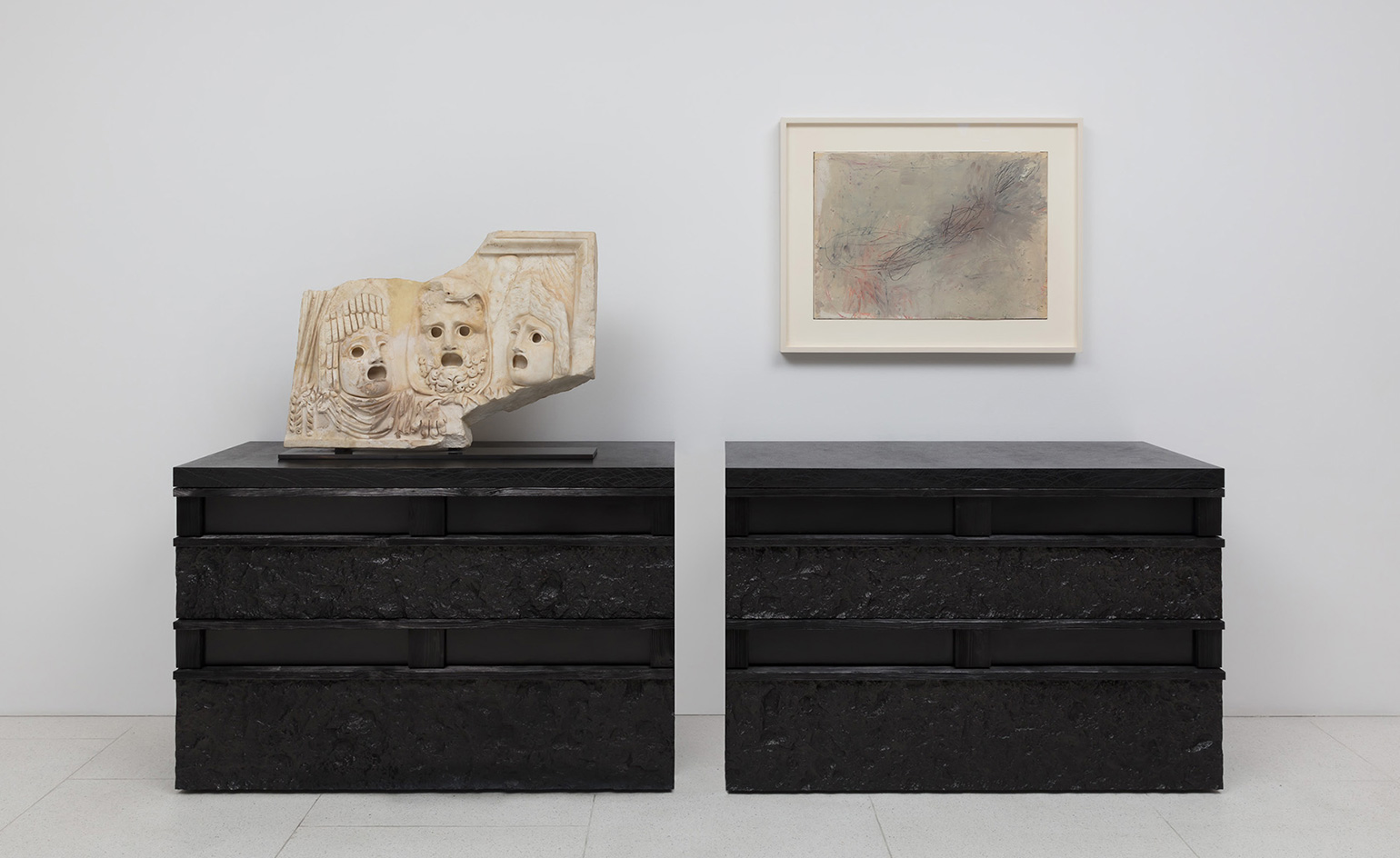
Installation view of 'Fire and Water' at Gagosian, London.
Bronze doesn't just appeal to Marino for its ability to outlive us. 'It's one of those materials that becomes more beautiful the more you touch it. It reacts to the oil in your hands, as opposed to plastic which gets scratched, or wood, that dries up and rots.'
Despite looking deep into the future, Marino's steel-toe capped shoes are firmly planted in the present. Physicality and touch are vital to his practice. He is preoccupied by texture, and the different patinas on his boxes attest to this. Charred, gilded wood gives way to undulating waves of silvered dragon scales, topped by impeccably varnished, blackened surfaces. The doors to one box bares imprint after imprint of Marino's thumb.
To the touch, such intricacies unfold themselves. From afar, the boxes are unshakable, ominous objects; some five foot tall, and just as wide. Marino calls them 'serious'. As with the previous two series (2012 and 2014 respectively), this collection was produced in France's Atelier St. Jacques, part of the Fondation de Coubertin – the French national institution for crafts and manual work. Marino describes his visit there as an 'emotional' experience. 'When I met the guys at the foundry, they were wearing hilariously long leather smocks and gloves so they don't burn. They pour out molten bronze liquid, the smoke pours everywhere – like the fourth of July. The casting is like giving birth to a work of art.'
Marino revels in the theatrical, almost mythological process, which he attributes to a childhood love of legend and storybook fantasy. 'All little boys love mythology,' he says. 'My favourite was always the "Golden Fleece". It is an enduring story. Myths are continually, universally relevant, which is why they last.'
As will these boxes. They are dateless, folkloric, and entirely untrendy. 'So often, people want to be an architect, or an artist, of their time,' says Marino. 'The higher goal, if I may, is to transcend it.'

The boxes are installed amongst renowned artworks from Gagosian's collection, as curated by Marino.
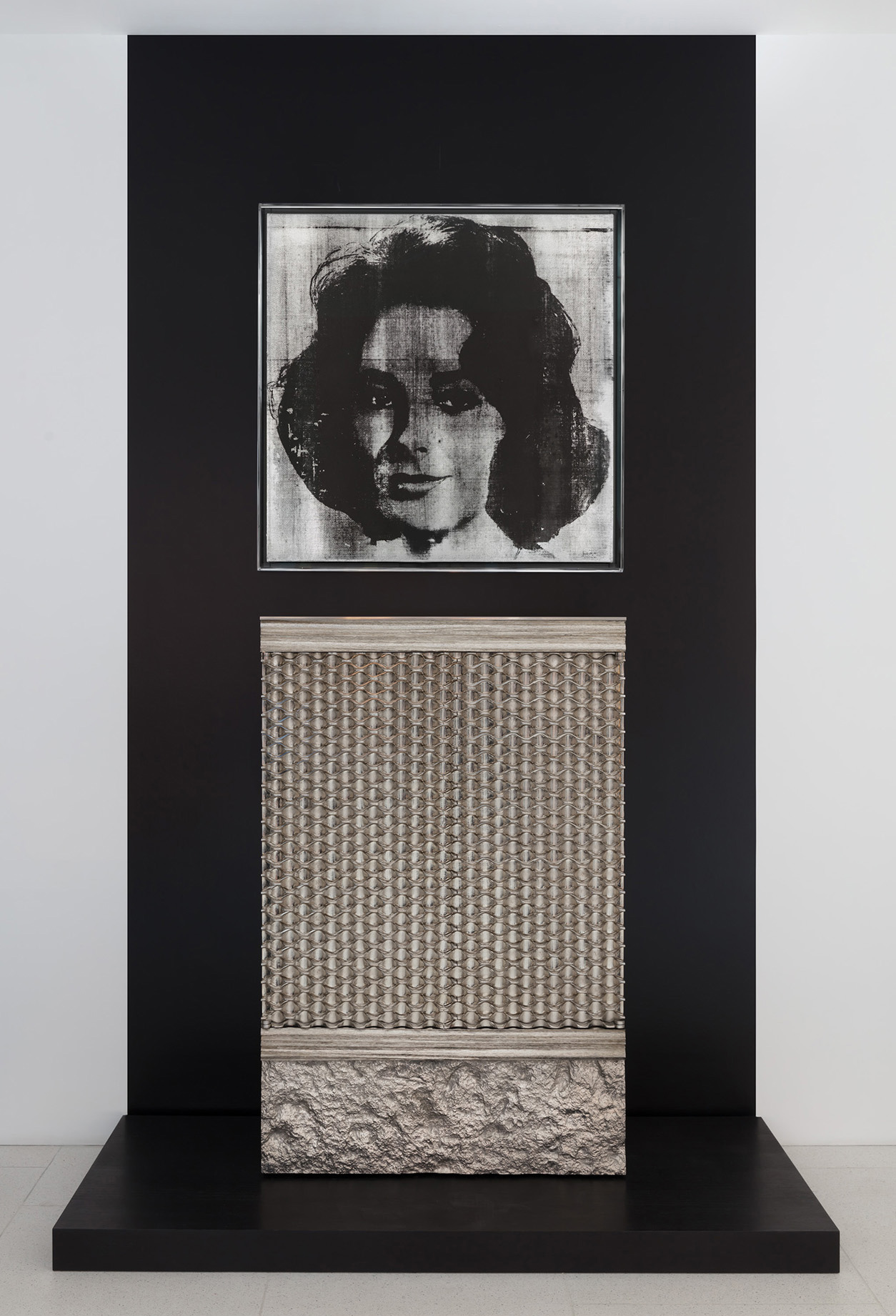
Each is rendered in a different patina: charred wood, undulating waves of silvered dragon scales, and varnished, blackened surfaces.
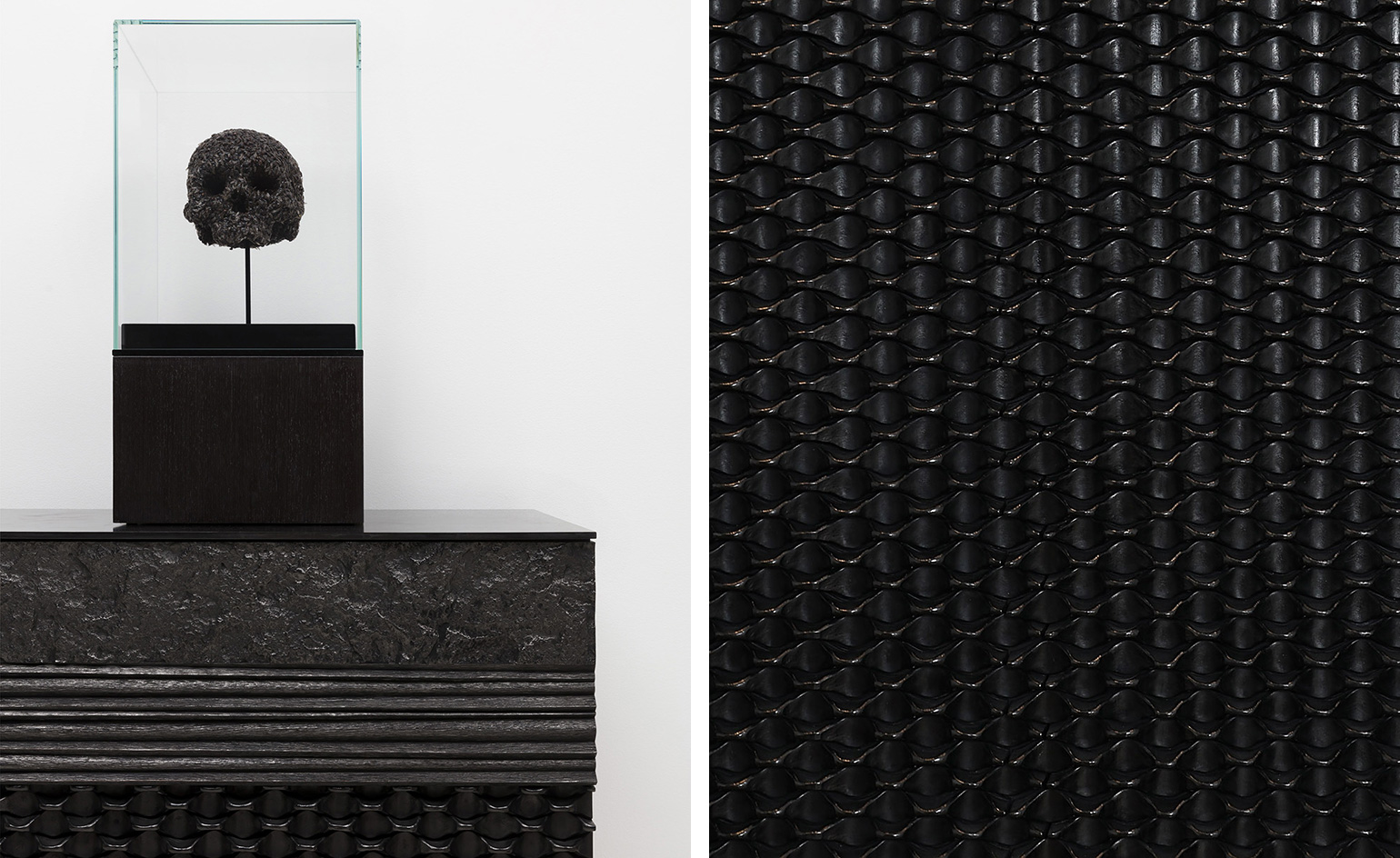
Detail view of the charred wood patina (left) and dragon scale patina.
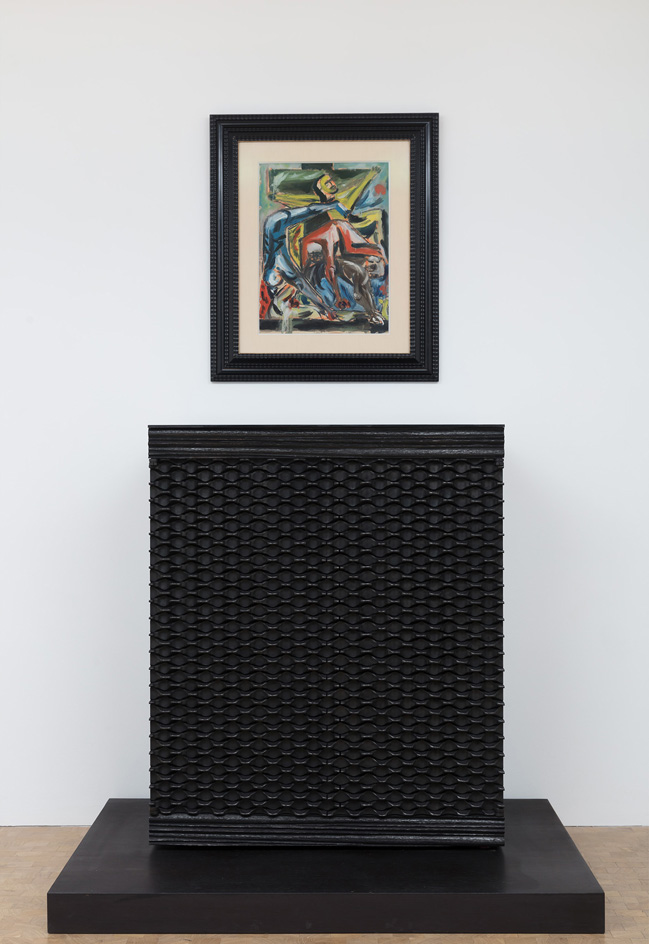
The collection was produced in France's Atelier St. Jacques, part of the Fondation de Coubertin – the French national institution for crafts and manual work.

Marino has worked with bronze since 2012, as well as collecting an extensive range of bronze objects
INFORMATION
’Peter Marino: Fire and Water’ is on view until 11 August. For more information, visit the Gagosian gallery website
ADDRESS
Gagosian
17 - 19 Davies Street
London
Receive our daily digest of inspiration, escapism and design stories from around the world direct to your inbox.
Elly Parsons is the Digital Editor of Wallpaper*, where she oversees Wallpaper.com and its social platforms. She has been with the brand since 2015 in various roles, spending time as digital writer – specialising in art, technology and contemporary culture – and as deputy digital editor. She was shortlisted for a PPA Award in 2017, has written extensively for many publications, and has contributed to three books. She is a guest lecturer in digital journalism at Goldsmiths University, London, where she also holds a masters degree in creative writing. Now, her main areas of expertise include content strategy, audience engagement, and social media.
-
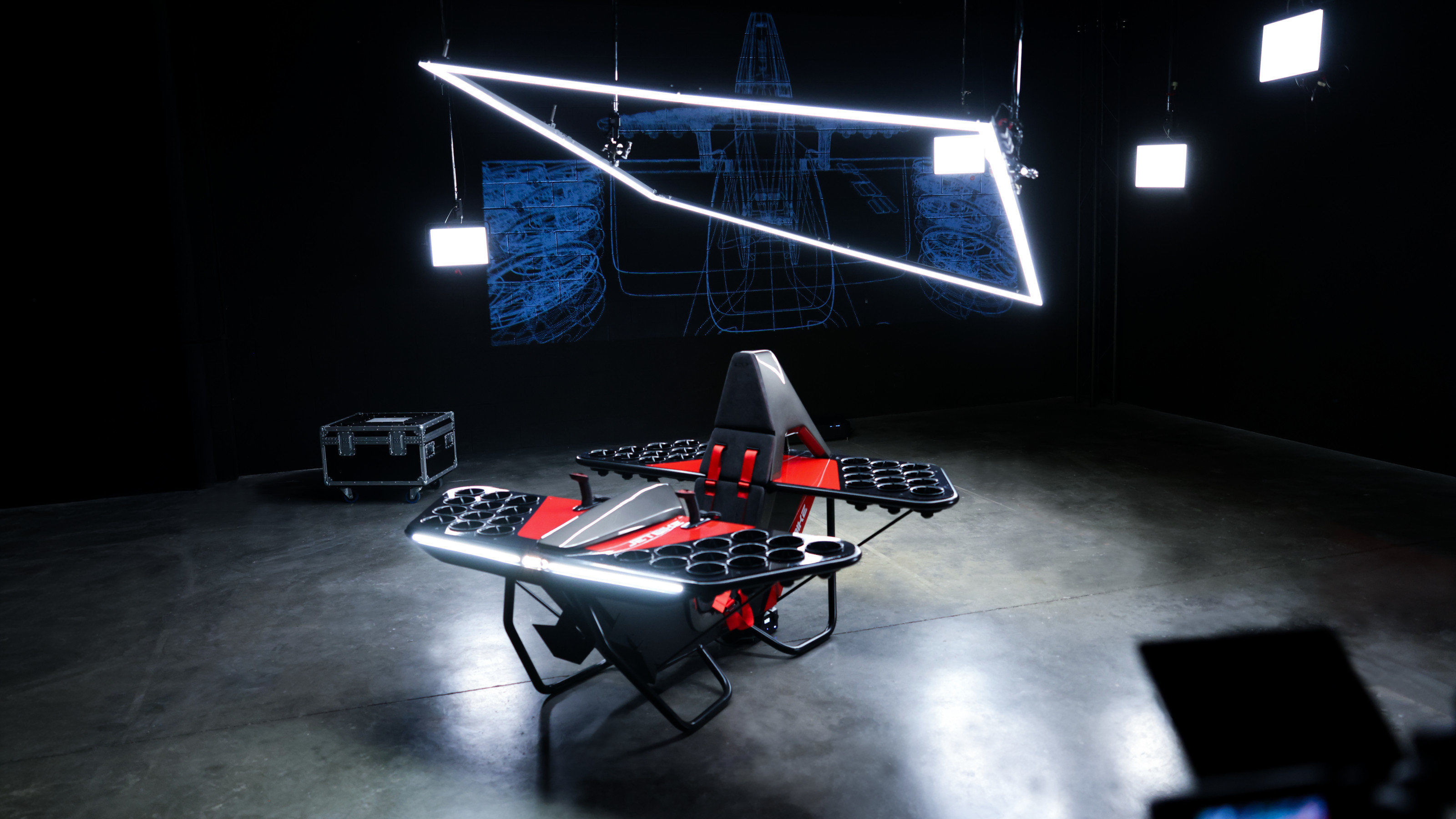 From jet bikes to electric speedsters, the CES debuts that might just fly
From jet bikes to electric speedsters, the CES debuts that might just flyCES 2026 brought new releases in the world of mobility tech, including a host of automotive AI innovations. We’ve rounded up the show's key debuts
-
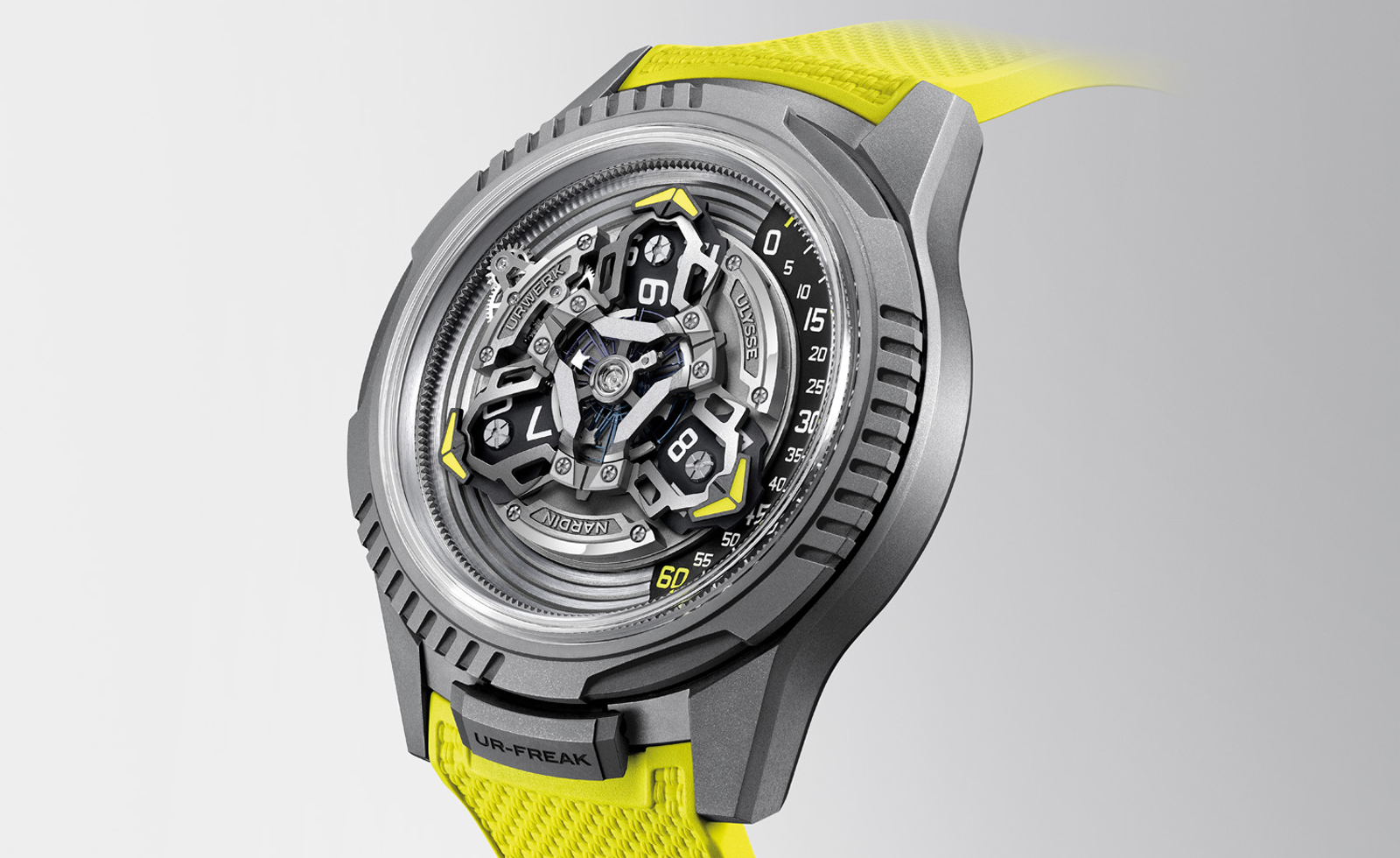 Wallpaper* Design Awards: A ‘no-hands’ watch is the Best Time Warp of 2026
Wallpaper* Design Awards: A ‘no-hands’ watch is the Best Time Warp of 2026The Ur-Freak watch by Ulysse Nardin and Urwerk reimagines a 2001 timepiece and wins a Wallpaper* Design Award
-
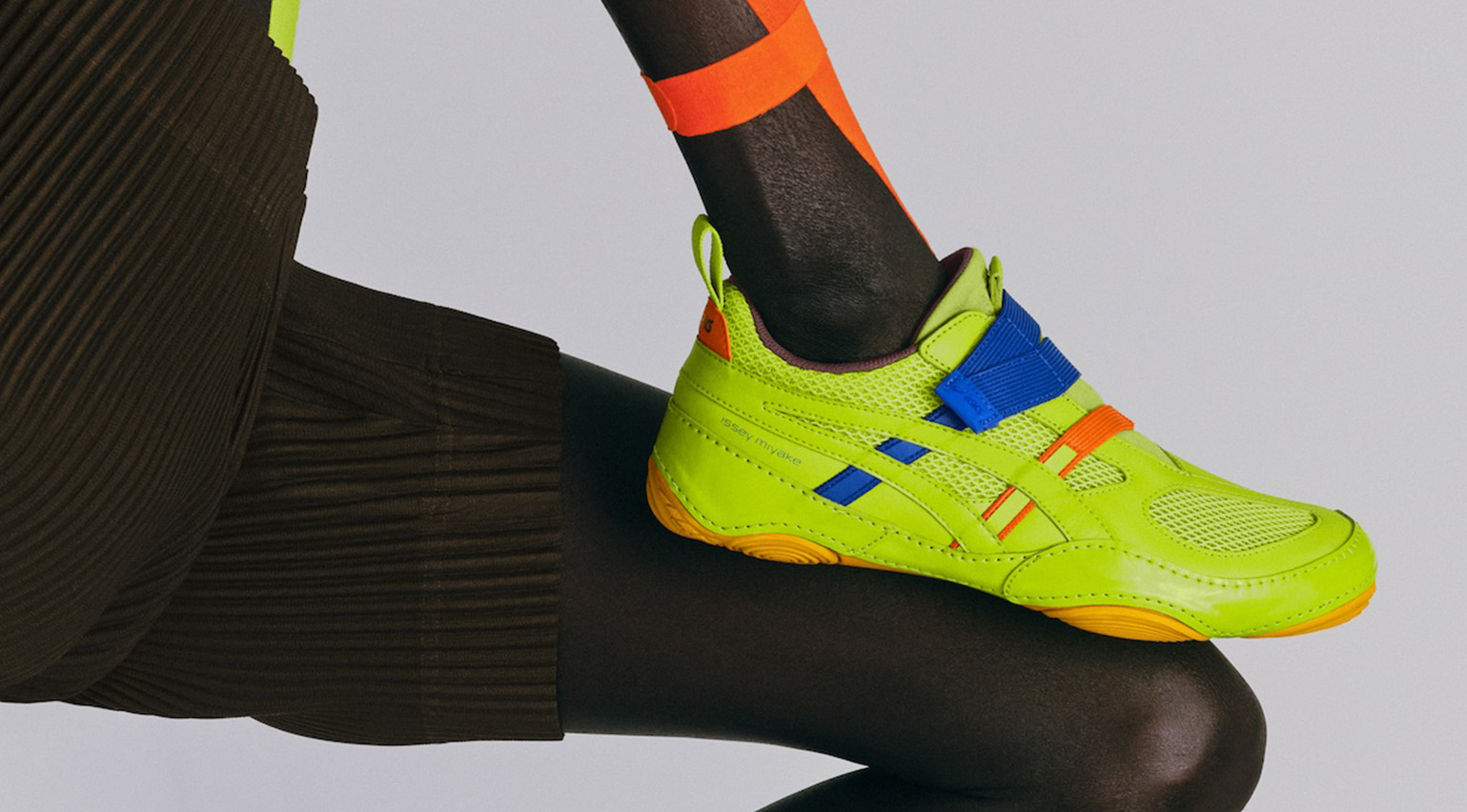 Issey Miyake’s colourful collaboration with Asics is making an early claim for sneaker of the year
Issey Miyake’s colourful collaboration with Asics is making an early claim for sneaker of the year‘Issey Miyake Foot’ is the name of a new, ongoing project between Miyake Design Studio and Asics. First up? The ‘Hyper Taping’ sneaker, which launches later this month
-
 Out of office: The Wallpaper* editors’ picks of the week
Out of office: The Wallpaper* editors’ picks of the week'Tis the season for eating and drinking, and the Wallpaper* team embraced it wholeheartedly this week. Elsewhere: the best spot in Milan for clothing repairs and outdoor swimming in December
-
 Out of office: The Wallpaper* editors’ picks of the week
Out of office: The Wallpaper* editors’ picks of the weekFar from slowing down for the festive season, the Wallpaper* team is in full swing, hopping from events to openings this week. Sometimes work can feel like play – and we also had time for some festive cocktails and cinematic releases
-
 The Barbican is undergoing a huge revamp. Here’s what we know
The Barbican is undergoing a huge revamp. Here’s what we knowThe Barbican Centre is set to close in June 2028 for a year as part of a huge restoration plan to future-proof the brutalist Grade II-listed site
-
 Out of office: The Wallpaper* editors’ picks of the week
Out of office: The Wallpaper* editors’ picks of the weekIt’s wet, windy and wintry and, this week, the Wallpaper* team craved moments of escape. We found it in memories of the Mediterranean, flavours of Mexico, and immersions in the worlds of music and art
-
 Each mundane object tells a story at Pace’s tribute to the everyday
Each mundane object tells a story at Pace’s tribute to the everydayIn a group exhibition, ‘Monument to the Unimportant’, artists give the seemingly insignificant – from discarded clothes to weeds in cracks – a longer look
-
 Out of office: The Wallpaper* editors’ picks of the week
Out of office: The Wallpaper* editors’ picks of the weekThis week, the Wallpaper* team had its finger on the pulse of architecture, interiors and fashion – while also scooping the latest on the Radiohead reunion and London’s buzziest pizza
-
 Out of office: The Wallpaper* editors’ picks of the week
Out of office: The Wallpaper* editors’ picks of the weekIt’s been a week of escapism: daydreams of Ghana sparked by lively local projects, glimpses of Tokyo on nostalgic film rolls, and a charming foray into the heart of Christmas as the festive season kicks off in earnest
-
 Wes Anderson at the Design Museum celebrates an obsessive attention to detail
Wes Anderson at the Design Museum celebrates an obsessive attention to detail‘Wes Anderson: The Archives’ pays tribute to the American film director’s career – expect props and puppets aplenty in this comprehensive London retrospective